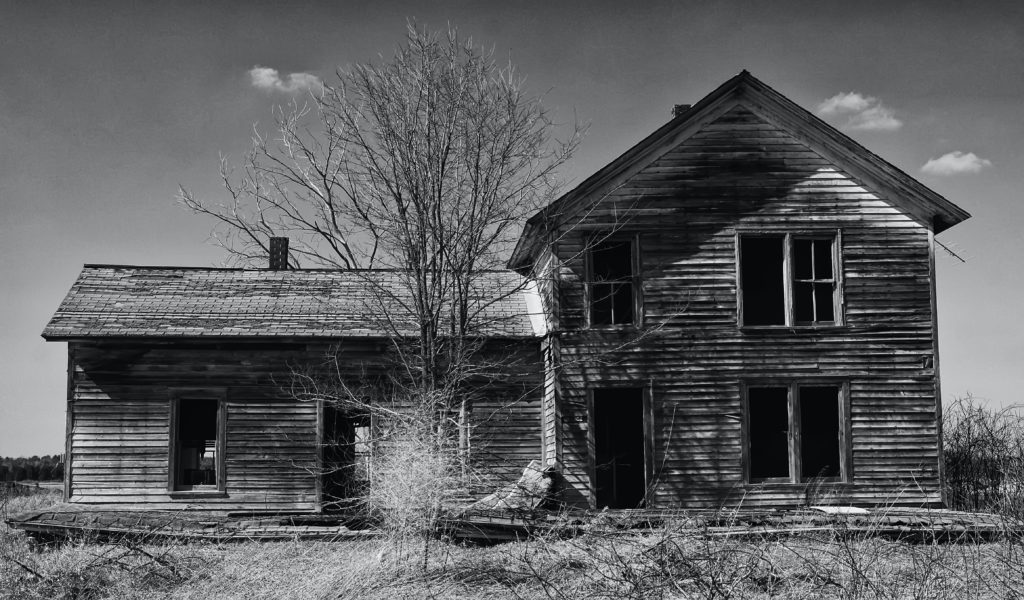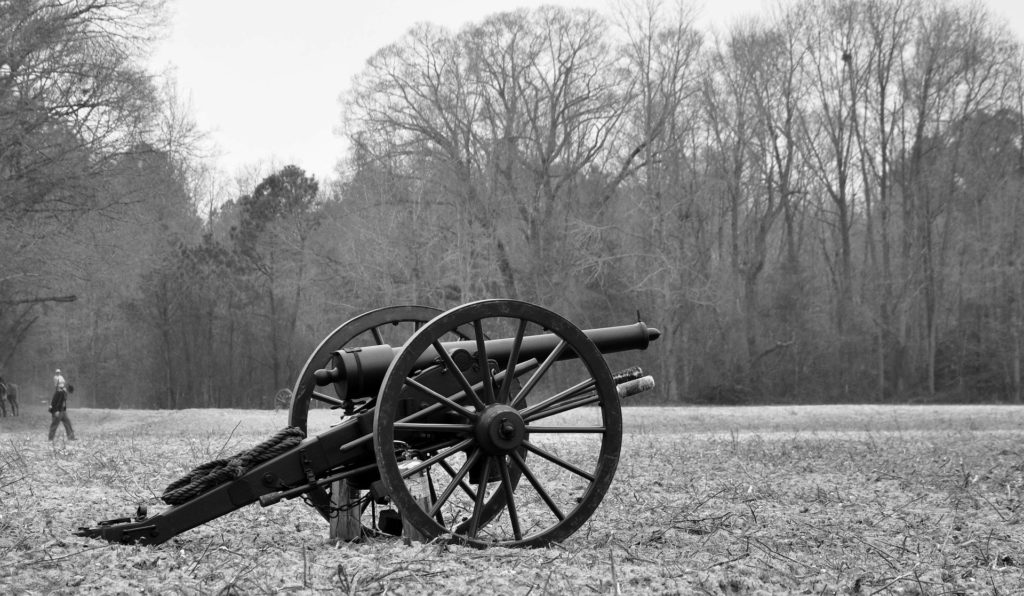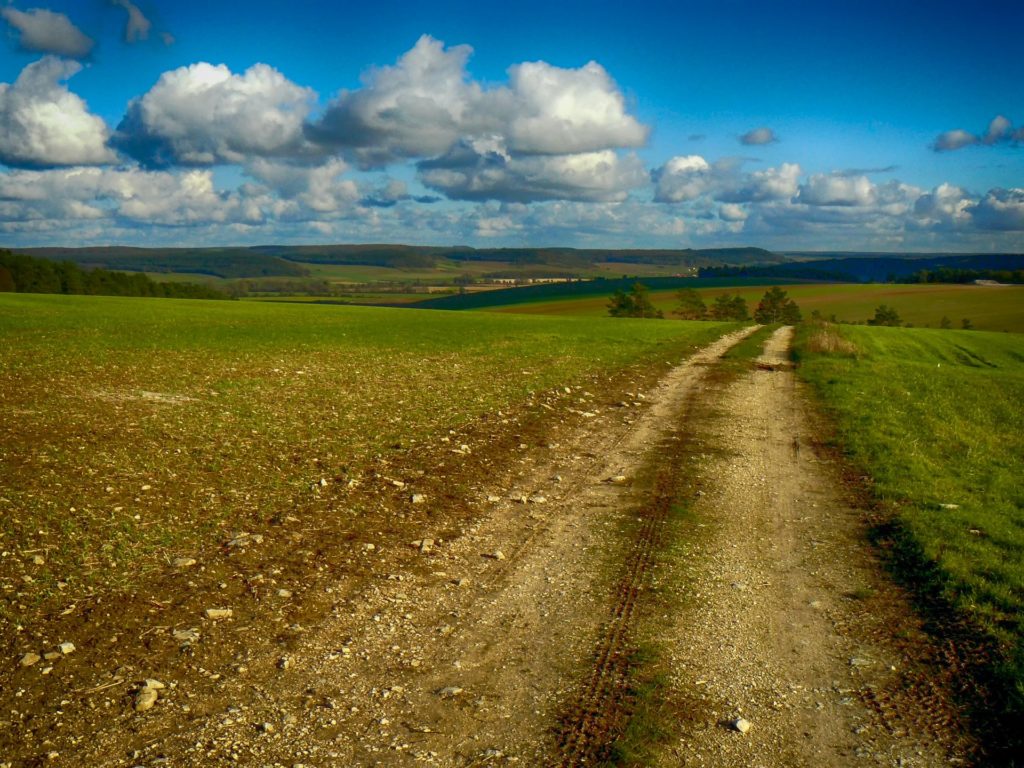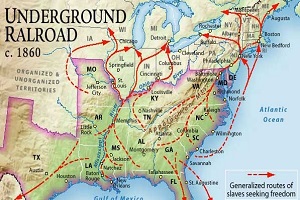The Underground Railroad was a secret method to help escaped men and women find freedom. Prior to being given a name, The Underground Railroad existed through efforts made by Quakers to aid escaped individuals in the seventeenth century.
Quaker Isaac T. Hopper organized an arrangement in Philadelphia to accomplish this in the early 1800s. Hopper hid slaves in his home and created safe passages for them to travel by. He later moved to New York City and continued his efforts there.
Another Quaker, Levi Coffin, also gave help to escaped individuals, starting when he was only 15-years-old. Coffin explained that he originally started by finding the fugitives himself and would then provide them with assistance on their journey. As time progressed, escaped African Americans began to approach Coffin to seek his help.
The first mentions of the railroad were heard as early as 1831 when a man named Tice Davids managed to escape from his Kentucky owner and made his way to Ohio. Davids’s owner claimed that an “underground railroad” gave him assistance in his escape.

In 1835, a Vigilance Committee was created in New York to protect runaway slaves from being caught during their travels to the North. They asked those who were against slavery to provide enslaved men and women with any assistance they needed and to avoid giving any form of help to those who were after them. Another committee was formed in Philadelphia in 1838. As more efforts were made to aid those on the run, the term “underground railroad” became more well-known among people.
It took much work and bravery for the Underground Railroad to be successful. Those involved included people who sympathized with the enslaved as well as former slaves who had managed to find freedom. These people held positions such as farmers, business owners and ministers.
A millionaire named Gerrit Smith bought an enslaved family so that he could help them escape. Many offered their homes as safe houses for individuals to hide. Churches and schoolhouses were sometimes options as well.
Harriet Tubman is a popular example of a diligent person who took risks in helping fugitive slaves reach freedom. Having been born into slavery, Tubman eventually found her way out and escaped to the North. She worked very hard, taking risks as she went back to help her loved ones and others escape as well. She also worked with the Union Army during the Civil War.

Another famous name associated with the Underground Railroad is Frederick Douglass. Douglass managed to escape from slavery on an actual train. He eventually settled in New York and opened his house for slaves to hide in and then move on to Canada. Douglass managed to help around 400 people.
John Brown also played a large role with the railroad. Like many others, he provided protection by hiding escaped people in his home. He also took part in the organization known as the League of Gileadites, which made efforts to assist runaway slaves on their path to Canada. Brown became associated with both Tubman and Douglass, as Tubman assisted Brown with planning the raid of Harpers Ferry in Virginia. Brown was caught and executed for his actions in the raid.
It was important that secrecy was maintained while assisting the men and women so that they would not be caught. To do this, those who helped orchestrate the Underground Railroad used various terms that were used for real railroads. Those who guided slaves to destinations were referred to as “conductors.” “Stationmasters” would offer the enslaved a place to secretly stay in their houses or “stations.” The paths taken by the slaves were called “Freedom Trails.” The escaped individuals themselves were referred to as “passengers,” “cargo,” or “freight.”
Slaves from border states of the North found it easiest to escape as they were the closest. These states included Kentucky, Virginia and Maryland. Those who were from states further down found it more difficult and less help was available as they traveled through the South, sometimes completely alone.
According to a study on newspaper advertisements of that time, 76% of individuals who attempted to run away were under the age of 35 and 89% of them were male.
Traveling conditions of the Underground Railroad were not pleasant. Many had to travel on foot in the dark, sometimes the distance of twenty miles in one night. They usually had a limited food supply. The escaped also had to face various weather conditions and avoid dangerous wild animals.

Paths taken through the Underground Railroad went in different directions across the United States. Like Harriet Tubman, some slaves traveled north to Pennsylvania or even went further into New England. Traveling west, others went through states such as Ohio, Indiana and Iowa.
When the Fugitive Slave Act of 1793 arose, it became even more difficult for the enslaved to escape. The act, which eventually had two parts as another was added in 1850, provided authorization for those who had run away to be caught and brought back to their owners. Those who gave assistance to the slaves could be punished, sometimes severely.
Some who were on the run began to make their way towards Canada, especially after the act was established. There were people within the country that made efforts to help the slaves escape over the border. Canada also offered more freedoms. Escaped individuals could choose the location of their home and even work for public offices.
The Underground Railroad continued through part of the Civil War and began to conclude in 1863. This was not the end of helping slaves find freedom, however. The actions of those such as Harriet Tubman and the Union Army were much more in the open, making the work of freeing slaves less necessary to be done “underground.”The war ended in favor of the Union Army in 1865. As President Abraham Lincoln passed the Emancipation Proclamation and the Thirteenth Amendment, slavery was abolished and the Underground Railroad’s purposes had been served. While the exact number of slaves helped by the Underground Railroad is unknown, some believe that an estimate of 70,000 was helped from the years 1800 to 1865.
Rebekah Davidson
Intern

